Background
There are several strategies for prescribing in classical homeopathy (1). The first strategy is the ‘totality of symptoms’ (totality). This strategy involves collecting all homeopathic symptoms of the patient and repertorising them.
The second strategy is studying the ‘essence of the patient’ (essence). The essence is the mental-emotional make-up of the patient. Hahnemann pointed out the importance of the psychological state of the patient in paragraphs 211-212 of the Organon of Medicine (2).
If the remedy covers not only the specific physical symptoms, but also corresponds to the existing psycho-emotional make-up of the patient, the probability of the remedy being correct is high.
Then there is the strategy of ‘keynotes’. It involves, first of all, searching for the unique and special, as well as pronounced symptoms of the patient (2, paragraph 153).
The ‘causation’ strategy is used somewhat more often in acute situations and involves prescribing a remedy depending on the immediate cause of the disease. This strategy can be useful in chronic cases, for example, if the development of the disease is associated with physical/chemical/psychological trauma or triggers.
The fifth strategy is the choice of the remedy according to the ‘essential features of the pathology’ itself, or according to the combination of pathologies (essentials). This strategy is well described in “Matter Medica Viva” by George Vithoulkas (3), where the combination of pathologies is described in the corresponding section. For example: the patient suffers from frequent otitis and stomatitis and needs Mercurius solubilis.
In extremely rare cases, when two indicated remedies have failed and the case still retains some symptoms of both remedies, a strategy of combining these remedies may help. For example, when a patient has Phosphorus and Nat-muriaticum characteristic features at the same time, Natrium -phosphoricum may help.
This, however, is to be used with caution and an attempt to prescribe on the symptom indication is better. Most often, a combination of several strategies is used. Let’s consider this concept through the example of the case below.
Case report
The parents of an 8.5-year-old boy sought homeopathic treatment on 11/04/2014, for their son´s coughing and asthma attacks.
A pulmonologist had diagnosed it to be severe atopic bronchial asthma of an immune form as well as localized atopic dermatitis, childhood form, and hay fever. Basic therapy with seretide was used, exacerbations were treated with berodual and pulmicort.
Anamnesis: The child was born from the first pregnancy, which proceeded within normal, vaginal birth at term. Starting from the maternity hospital, the boy received all scheduled vaccinations until the age of 5 months, until the development of severe atopic dermatitis.
At the age of 2 months, the first rashes on the skin appeared, which at 5 months began to spread throughout the body, accompanied by weeping and severe itching. He was treated in the Allergy Center of Children’s Clinical Hospital No 1 in Novosibirsk with steroids and zinc ointments, and antihistamines.
At the age of 2.5 years, bronchial asthma developed, and basic therapy with flixotide was prescribed. He began to get sick often (about 3 times a year), with acute respiratory infections with high fever, up to 39oC. This continued until the age of 8, after which the acute respiratory infections became less frequent.
At the age of 6, he was first seen by a homeopathic doctor, was treated with mixtures of a large number of homeopathic medicines. Among other remedies he received were Lycopodium, Tarantula, Medorrhinum, without effect.
Complaints during the first consultation with gradation:
Bouts of dry cough at night (3), and in the evening before going to bed and in the morning at 4-5.00, wheezing, whistling.
Cough somewhat better from hot drinks (1), better lying on the abdomen (1)
He is afraid of sleeping, because of having nightmares (2); he has dreams of falling from a height, and of monsters.
Fear of the dark (2), he sleeps with a nightlight. Fear of being alone (2) “what if monsters come.” Fear of dogs (3)
Weakness of memory (1); cannot remember the multiplication table.
Mental – emotional status:
He usually swears at home and commands parents (2)
Jealous of the younger brother (3); he says that he “hates” him, that the brother “ruined his life”.
Motor restlessness in the hands – constantly twirls them (2)
Provocative behaviour (3): threatens to leave the house, brings a rope and says that he is about to hang himself.
Takes off his underpants, exhibits his genitals every day at home (3).
Other symptoms and modalities:
He sleeps on the left side.
Warm-blooded (2).
Food cravings: he puts extra salt (1); he likes sour (2), he is indifferent to sweets, does not eat eggs (1), has aversion to fat (3. He likes onions and garlic (2).
He drinks cold water 2.5 – 3 litres per day.
At the time of examination there is dryness and redness in the elbows.
Family history: the patient’s mother had hay fever, the patient’s maternal uncle had pollinosis and bronchial asthma.
Level of health and prognosis: In children having bronchial asthma, homeopathic treatment most often gives good results. However, in this case, it was necessary to take into account a history of suppression of severe atopic dermatitis, that the child had previously received a large number of drugs, both allopathic (and continued to take them) and homeopathic.
It was also necessary to take into account the fact that the boy was affected not only on the physical, but also on the mental -emotional level. The patient had many symptoms on the latter level, which most likely predicted complex and lengthy treatment.
Hereditary predisposition to allergies also worsened the situation and created additional difficulties for the treatment. In the summer of 2013 (a year before the beginning of the current treatment) there was an acute respiratory viral infection with 39oC fever, an indication that the reactivity of the body was still good, and there was hope for a cure. The supposed level of health of the patient was on the borderline between the 6th and the 7th level.
Repertorization
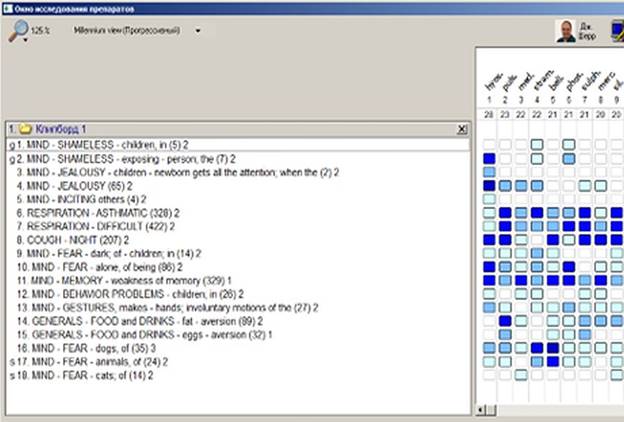
Fig. 1 Repertorisation during first consultation. Radar software.
Analysis: The totality of symptoms was considered, plus the keynote symptoms. According to the hierarchy of symptoms, the pronounced mental – emotional symptoms belonged to Hyoscyamus.
Prescription on 11/04/2014: Hyoscyamus 30C 5 grains 2 times a day for 5 days in a row.
Follow up
Table 1. Follow up of the case
| Date | Response to remedy and interpretation | Prescription |
| 07/05/2014 | On the 5th day from taking the remedy, an exacerbation of bronchial asthma began, which was milder than usual and lasted a week; usually it would last two weeks; only salbutamol was used. He was not jealous of his brother anymore.
Gone were the fears of dogs and the dark. But he continued to exhibit his genitals every day at home. During the consultation, he defiantly lay down on the couch and put his hands in his pants. According to his mother: “Does everything to spite others. “Food and other general modalities were unchanged. |
Hyoscyamus 30C
in solution for 7 consecutive days |
| 12/08/2014 | The patient felt good.
On 20/05/2014, after eating sweet cherry he had urticaria. From 17/07/2014, he had runny nose in the morning, and bouts of nocturnal coughing, which had to be relieved with salbutamol. The rest of the symptoms were unchanged. Taking into account the use of a bronchodilator, a daily intake of the medicine in the mixture was prescribed |
Hyoscyamus LM 30 in water daily for a month
with daily shaking |
| 09/09/2014 | A month passed without asthma attacks. But on the 05/09/2014, sneezing began, and on the 08/09/2014, a nocturnal attack of bronchial asthma developed, which was not relieved by salbutamol, and pulmicort had to be used. The fear of the dark increased (3). He was shouting to his sister that he would kill her (2) if she took away his toys. The mother was afraid to leave them alone. Mild fear of dogs (1).
Thus, against the background of Hyoscyamus and a partial improvement in the underlying pathology, there was a change in symptoms towards a complementary remedy |
Stramonium 30C
in solution 4 times a day for 3-5 days, until asthma remission. |
| 23/10/2014 | Cough and shortness of breath stopped. The rest of the symptoms are the same. | Stramonium 200C
two doses with an interval of several hours |
| 13/11/2014 | The cough became rare, salbutamol was not required. A new modality of cough appeared: it is better in the cold (2).
Started fighting at school (1). |
Stramonium 200C
One dose |
| 17/12/2014 | Rashes appeared all over the body and persisted for 2 days after Stramonium 200.
A week ago, perhaps after a contact with a cat, a severe attack of bronchial asthma began, Prednisolone and Pulmicort had to be given. During the consultation: asthmatic breathing, ameliorated by cold air (2), painful cough (2), holding his abdomen, ameliorated by pressure. Difficult breathing was ameliorated by lying down. |
Bryonia LM 30
In water, to take one sip every 3 hours. The condition improved in 24 hours.
|
| 14/01/2015 | Since all prescribed remedies would give temporary improvement, the child was presented to a homeopathic re-consultation, where it was noticed that during exacerbations the psycho-emotional state of the boy would change dramatically, and he would become very affectionate. Other symptoms are presented in the repertorization (Fig. 2) | Pulsatilla LM 30
In water, 3 times a day, for 7 days with daily shaking |
| 26/01/2015 | Shortness of breath increased, a wet gurgling cough began, and fever of 40oC. Marked drowsiness. Respiratory failure 2-3 degree. Pulsatilla did not relieve dyspnoea. The examination was carried out at home. Based on the totality available at this time, prescription was made. | Antimonium tartaricum 30C |
| 17/02/2015 | On 31/01/2015 the boy went to school; the exacerbation having resolved. Considering the persistence of Pulsatilla symptoms (need for consolation, aversion to fat, difficult breathing, better from cold air), it was decided to repeat the remedy. | Pulsatilla LM 30 in water for a long period, 1 teaspoon daily (with instructions to stop in case of aggravation). |
| 25/04/2015 | Parents reported that while taking the remedy, the bouts became milder, they could be controlled with salbutamol, without the use of glucocorticoids, sometimes just opening the balcony door was enough. But aggression sharply increased (2). If the mother turned off the computer, the boy would shout: “If I had a knife, I would have killed you!” The rest of the symptoms did not change.
Conclusion: Negative dynamics – physical suffering decreased, mental-emotional symptoms manifested. Probably, the prescription of Pulsatilla, based on the assumption that a change in the psychological state during an attack was one of the important symptoms of the disease, was erroneous.
|
Hyoscyamus 30C
in case of exacerbation, it was planned to increase potency. Over the period from April 2015 to December 2016, the child received Hyoscyamus 200C, 1M, 10M, Arsenicum album 30C (during the summer exacerbation of hay fever), Medorrhinum 30C, Lachesis 30C. All remedies gave a temporary and unstable effect. |
| 18/02/2017 | A detailed retaking of the case done. It was noted that the disease had progressed, and that despite the use of appropriate remedies on the principle of similarity, the following psychological symptoms had not gone away: the desire to kill when parents refuse to fulfil his wishes, exhibitionism, fear of the dark, jealousy, reluctance to study, being rude towards his mother, swearing.
Given the ineffectiveness of the main remedy selection strategies, it was decided to change tactics and prescribe only for the physical pathology – bronchial asthma with its modalities, the most striking of which was cough, with improvement in cold air (3). In addition, he began to drink cool water, suffocation was accompanied by paroxysms of coughing with the urge to vomit, it occurred mainly in the evening before going to bed at 23.00 hours, while lying down horizontally, and in the morning at 5-7.00 hours. The attack was resolved by the discharge of viscous and dense sputum. This clinical picture pointed to Coccus cacti. The fact that the child’s mental state reversed sharply during exacerbations supported the idea of the lesser significance of mental symptoms (despite their severity), since they were easily suppressed by more severe physical symptoms during exacerbations. He was prescribed based on “pathology” strategy. |
Coccus cacti 12C
in solution daily 2 times a day (with daily shaking) |
| 28/03/2017 | The condition stabilized until March 27, but on March 28, an exacerbation began again.
|
Coccus cacti 30C was prescribed daily.
The boy received Coccus cacti 30C, then 200C, then again, a12C in solution with shaking until June 2017. The potency was changed when the previous potency stopped working. |
| 02/06/2017 | The main complaint is hay fever, which occurs every year. Severe sneezing (2). He used to sit in a hot bath and the runny nose would decrease. There is a nasal obstruction, running nose. Outdoors, the obstruction decreases (1). His respiration is asthmatic, accompanied by coryza, better from cold air (2). Warm-blooded (2). His appetite is very good, but he is thin (2). Fussy, hyperactive (2). According to the totality and key notes, a new repertorization was carried out (Fig. 3)
Here, the new strategy of prescribing by combining remedies was applied. The patient was better from the steam in a hot bath, but it was warm-blooded nonetheless. And Arsenicum iodatum has symptoms of hay fever, restlessness and a special symptom – good appetite with emaciation in children. |
Arsenicum iodatum LM 6 in water, with shaking for 6 days. |
| 08/06/2017 | For the first time hay fever stopped very quickly | Coccus cacti C200 in a solution with shaking for several days for the period of exacerbation of bronchial asthma. This was repeatedly done till 01/12/2017, as needed. |
| 01/12/2017 | There was severe exacerbation during the last week despite taking Coccus cacti C200.
The boy was using inhalations with Pulmicort 500 mg, thrice a day. Thus, Coccus cacti ceased to have a healing effect. As a result, the case was re-taken. It turned out that some of the symptoms and modalities remained the same, but some changed: difficulty breathing, cold air is better (3), lazy (3). During the consultation the patient´s long dirty nails were noted. It was necessary to force him to wash himself. He had burning in feet; he went to school in autumn shoes even during frost in winter. Food modalities: aversion to eggs (2), aversion to fish (3), desire for sweets (3), desire for steaks with blood (3) Hot (3). Arrogant (2) (Fig. 4) The prescription was made according to the changed nature of the case and keynote symptoms. The high potency was chosen because of the clarity of the picture of the remedy. |
Sulphur 1M one dose.
After Sulphur, the condition immediately improved. Within a week, shortness of breath completely disappeared, the boy stopped using inhalers all together.
|
| 21/04/2018 | After contact with the cat, severe runny nose developed, with shortness of breath and cough. | Sulphur 1M one dose,
after which there was no cough and shortness of breath for almost a year and a half. He had rare acute respiratory infections, with fever. |
| 19/09/2019 | They asked for help after a year and a half of remission. The boy began to smoke and consume energy drinks with high content of caffeine.
Two days ago, he again developed coughing, sneezing, runny nose and shortness of breath (3). He had to apply salbutamol. The modalities of the case had changed this time: he became very chilly (2). Restless (2), anxious, needed his mother to be close to him. The prescription was made on the basis of the totality of symptoms. |
Arsenicum album LM 30
in solution with frequent doses for 3 days, with a gradual decrease in the frequency of doses. Following this, he felt better and stopped using inhalers. |
The numbers in brackets indicate the symptom gradation.
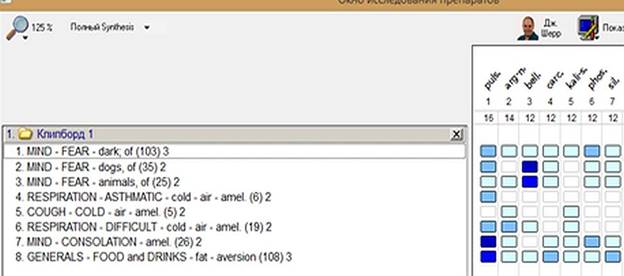
Fig. 2 Repertorisation on 14/01/2015. Radar software.

Fig. 3. Repertorisation on 02/06/2017. Radar software
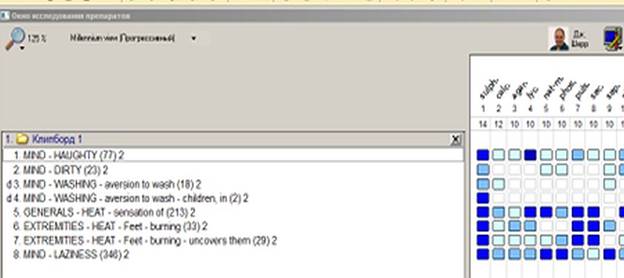
Fig. 4 Repertorisation on 01/12/2017. Radar software
Final outcome:
After the last episode, he had no more homeopathic appointments. According to his mother, he felt well, attended school, also went in for sports (alpine skiing). Rarely, episodes of allergy with a runny nose and shortness of breath (in particular, upon contact with cat) developed, for which the patient used salbutamol on his own with good effect.
The psycho-emotional state remained normal. In March 2021, the mother reported that warts appeared on the boy’s toes, which was regarded as an elimination reaction in accordance with Hering’s law (“from inside outwards”). No treatment was given. However, it is possible that Thuja or another deep-acting drug will be needed further for the final cure.
Discussion
The treatment of this patient was not easy. Frequent and severe exacerbations required close attention, including home examinations. Heredity, vaccinations, long-term suppression by allopathic medications, and indiscriminate prescribing of homeopathic medicines in the past had led to a confused picture of the case and a decline in the patient’s health.
As a result, the treatment lasted quite a long tim, and various strategies for prescribing homeopathic medicines were consistently applied. The remedies were changed during the therapy (which is typical for a patient of the 7th level of health) according to the change in the clinical picture of the case and were chosen strictly according to the principle of similarity.
It was very important and indicative that at a certain point in the treatment it was necessary to ignore quite pronounced mental and emotional symptoms (aggression, jealousy, provocative behaviour, a tendency to show the genitals) and focus on the boy’s main physical pathology.
We analysed that during exacerbation the boy becomes soft and affectionate, because of the greater severity of the physical pathology, which displaces the mental and emotional symptoms, smoothing out the characteristics of the child’s nature ( Organon of medicine, paragraph 210, note).
As a result, Coccus cacti was prescribed, which significantly advanced the case, allowed not only to achieve a significant and prolonged remission in terms of bronchial asthma, but also largely eliminated behavioural disorders, helping to clarify the picture of the next remedy, which turned out to be first Arsenicum-iodatum, and then Sulphur.
This became a turning point, when the beginning of recovery was clearly manifested, and a long-term remission was achieved. The level of the child’s health was elevated from the borderline of Group C (between 6th/7th levels) to the upper (4th) level of Group B.
Conclusion
This case, of course, cannot be considered complete, since the patient still suffers although rarely and in a mild way, signs of allergy (when he comes in contact with cat, during the flowering of birch, when using energy drinks, etc.) in the form of allergic rhinitis and bronchospasm.
The main sign of recovery in this case should be the appearance of widespread rashes on the skin with itching (the return of atopic dermatitis), which has not yet happened. Unless that occurs, we cannot claim cure of the bronchial asthma and hay fever.
Nevertheless, this case demonstrates the efficiency of the homeopathic method of treatment even in advanced cases of severe bronchial asthma when it is impossible to achieve a stable remission with standard regimen. Currently, the patient manages without basic therapy, feels well (and therefore does not consider it necessary to be treated further), and only rarely uses salbutamol when mild attacks of bronchospasm occur.
Bibliography:
- Theory 12B Lecture by George Vithoulkas, IACH E-Learning course.
- Organon of Medicine by Samuel Hahnemann, 6th edition.
- Materia Medica Viva, volumes 1-7, by George Vithoulkas.





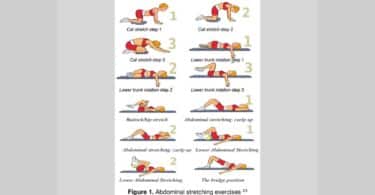
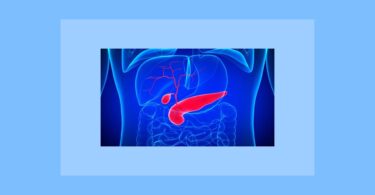
Thank you for sharing an excellent case example. The state of health of most patients requires a series of remedies for reduction of disease. So a case reflecting the real world is welcome